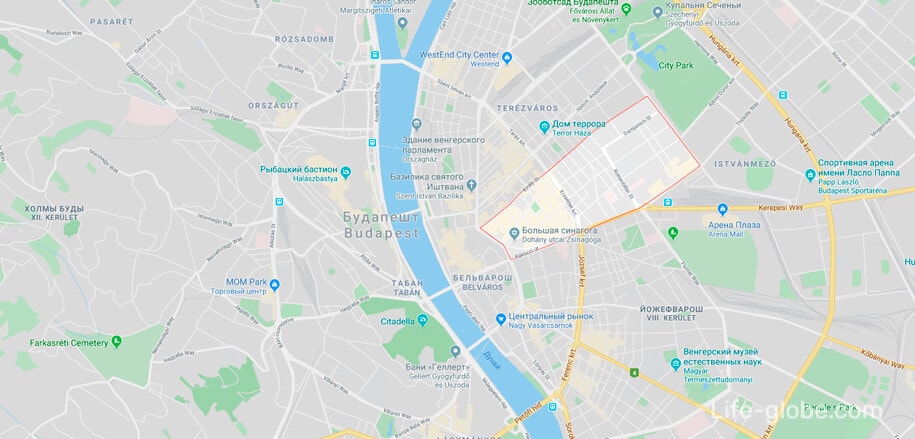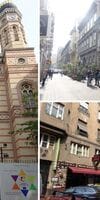The Jewish quarter in Budapest (Budapest ghetto, the Jewish ghetto) is located on the pest side, in the inner half of the heart of Erzsébetváros district / Erzsebetvaros (near street karolyi / Karoly krt), which is one of the Central and most populous area of pest, where Jews live.
District of Erzsébetváros was named after Queen Elizabeth, the popular wife of king Franz Joseph I.
Its current common name of the "Jewish quarter" part of the district received in 2000-ies.
This is partly due to the fact that since the 19th century in this part of Budapest were the main centers of religious life of the Jews. However, by the beginning of the 20th century, Jews, who comprise one fifth of the population of Budapest lived in almost every area of the city. Additionally, the formation of the Jewish quarter is also related to the fact that in 1944, in the so-called large ghetto, was placed tens of thousands of Jews were deported and at the same time from a quarter of the non-Jewish population. So at that time in this area really lived (kept) only to Jews, and part of the city became problematic. The population of the ghetto was approximately 70 000 people.
Later this part of the district was virtually abandoned by the population prior to the regime change. More affluent families and residents have moved in.
Currently, the Jewish quarter in Budapest is not the most picturesque place in the city, many houses remain in an unfavorable light, but, without a doubt, the quarter is a historical interest and within it are some of the important sights of Budapest.
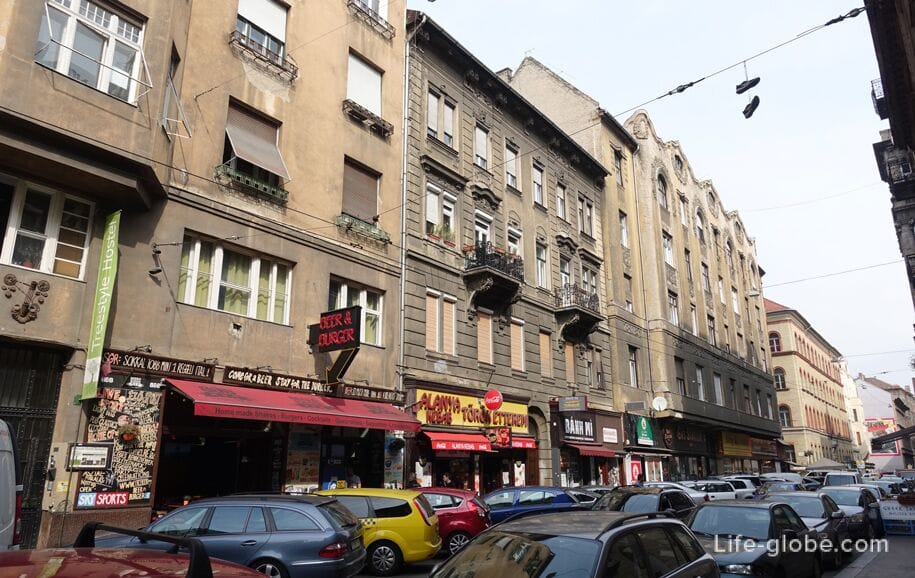
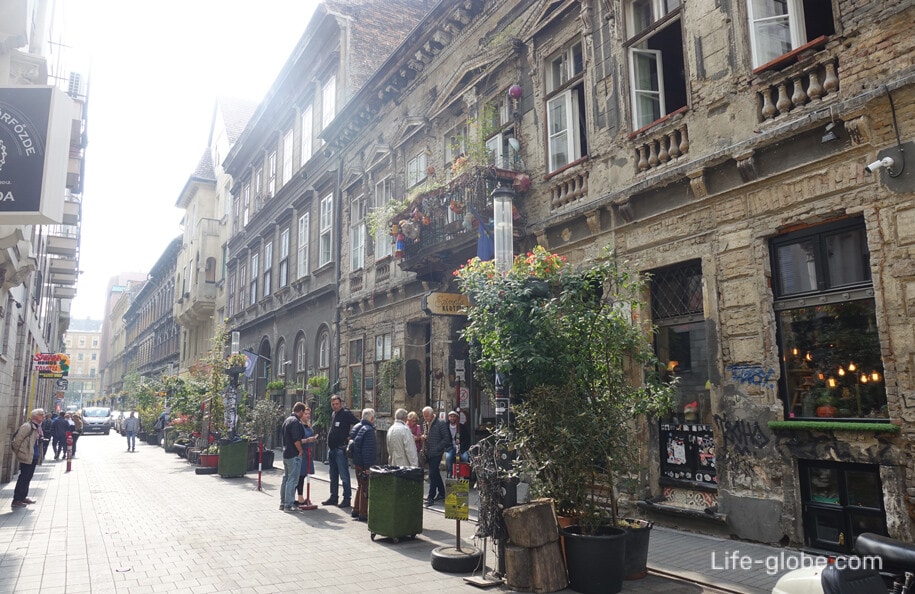

In 2005, the 60th anniversary of the Holocaust, on the Danube promenade was a sculptural composition "Shoes on the Danube promenade" which is a memorial in memory of the victims of the Holocaust. Read more about the monument "Shoes on the Danube promenade"...
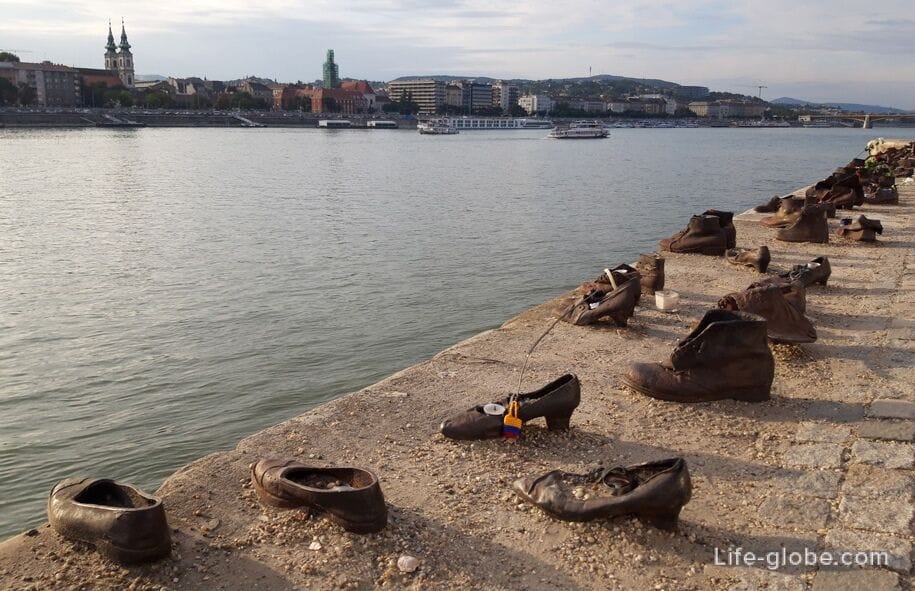
Sights of the Jewish quarter in Budapest
The great synagogue
The great synagogue or the synagogue on Dohany street (Nagy Zsinagoga / Dohany utcai Zsinagoga) is the largest functioning synagogue in Europe and a long history, a symbol of cultural life and one of the main attractions of Budapest.
The monumental synagogue was built in a residential area between 1854 and 1859 in Moorish revival style, with decoration based mostly on Islamic models from North Africa and medieval Spain (the Alhambra).
The ceremonial opening of the synagogue took place on 6 September 1859.
During the history the synagogue was restored (repaired). The building was damaged during the Second world war, at the same time the temple garden became a mass graveyard. After the war, at the request of the relatives of some of the remains were exhumed, but not all remains had been identified and some are still in the cemetery of the synagogue.
Today the Great synagogue is a symbol of the Hungarian Jewish community and the Hungarian Jewish culture. Can accommodate 3,000 people.
The great synagogue is a complex which includes the temple of Heroes, designed by Laszlo Vago and built in 1931; the memorial Park Raoul Wallenberg (Holocaust), where on the pedestal of red granite is a "Memorial tree for the victims of the Holocaust", created by Imre Varga; a cemetery in the yard of the synagogue and Hungarian Jewish Museum. In addition, in the complex of the synagogue, concerts of classical and organ music, temporary exhibitions and festivals.
The entrance ticket to the Great synagogue is 4 500 HUF adult ticket 1 500 HUF - children from 6 to 12 years, 3 400 HUF students, 10 100 HUF - family ticket (2 adults and minimum 2 children) children under 6 years stay free of charge. Tickets can be purchased at the box office near the entrance to the synagogue or online that you can logon to the queue. Online tickets can be purchased here.
The Great synagogue address: Dohany u. 2.
The site of the Great synagogue: dohany-zsinagoga.
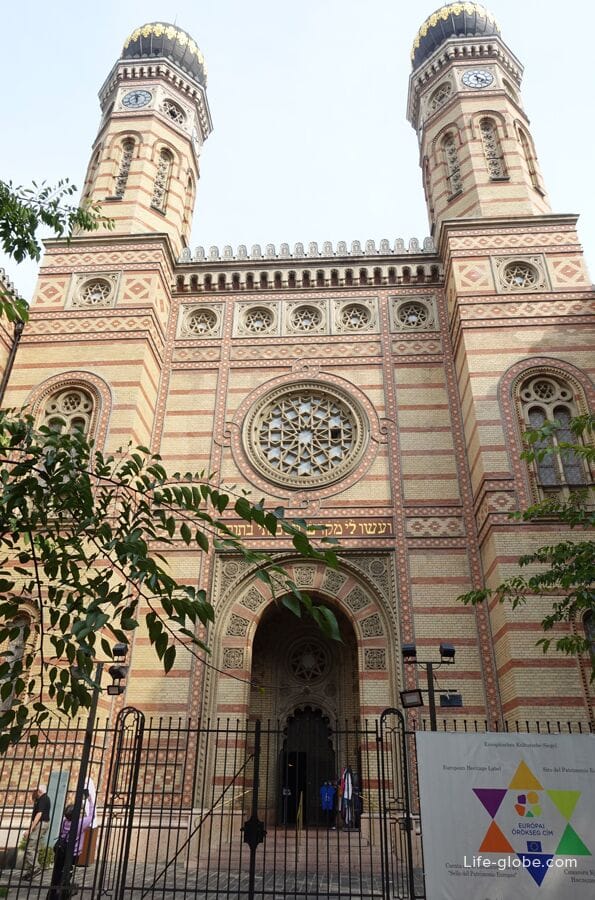
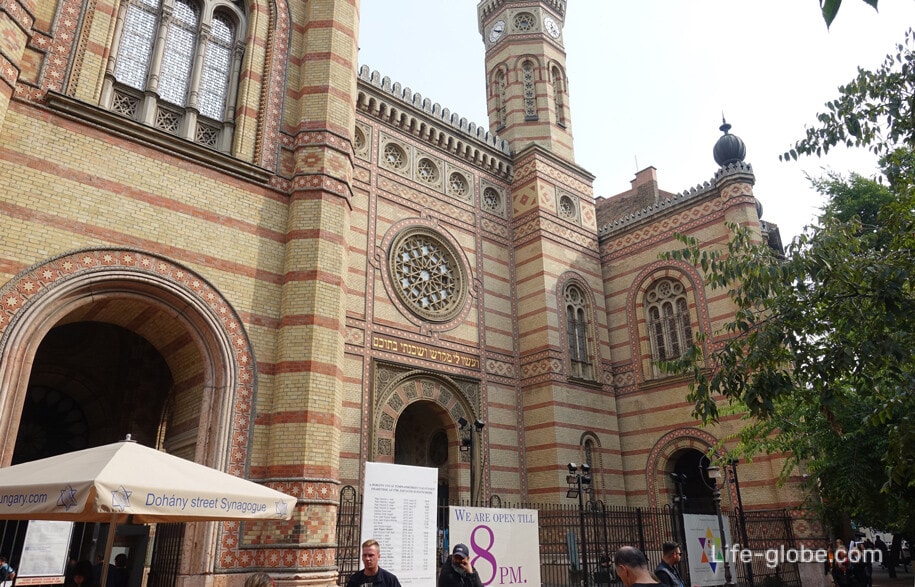

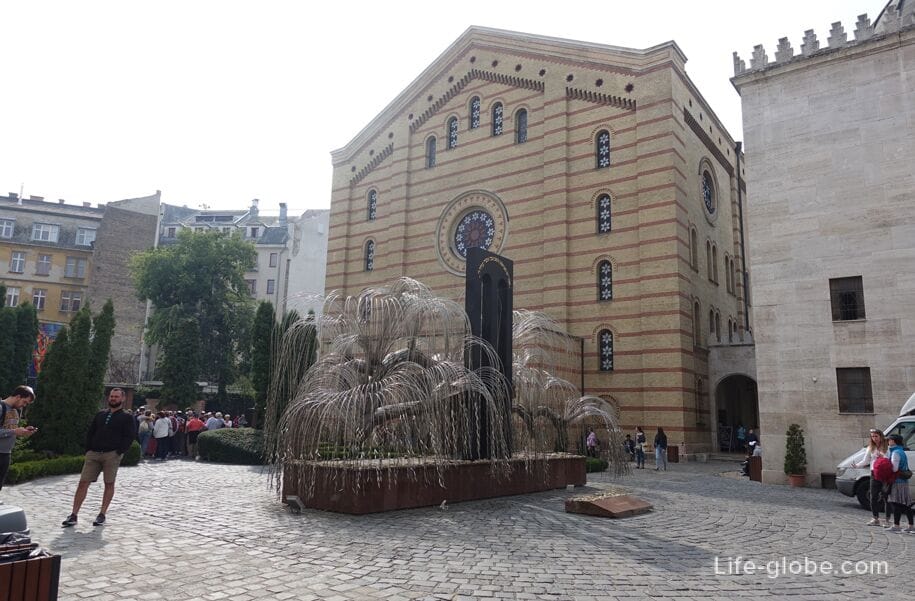
Street synagogue of Rambha
Street synagogue of Rambha (Rumbach zsinagoga / Rumbach utcai zsinagoga) was erected in 1869 - 1872 years at the expense of donations in a romantic-Moorish architectural style.
The building was destroyed since the Second world war, since 1959, has not been used for religious purposes, and in 1979, its roof was demolished. Restoration work began in 1900 year and was carried out in stages and the restoration took place in 2018.
Synagogue address: Rumbach Sebestyen u. 11-13.

Street synagogue, Kazinczy
Street synagogue, Kazinczy (Kazinczy utcai zsinagoga) was erected in 1912 - 1913 in the art Nouveau style, immediately after the opening became the religious cultural center of the Orthodox branch of the Jewish people of pest.
This synagogue is one of the most characteristic works of Hungarian synagogue architecture before the First world war.
The building was damaged during the Second world war and again fully opened only in 2004.
The entrance to the synagogue fee, is 1 000 HUF (€4 or $ 4).
Synagogue address: Kazinczy utca 29-31.
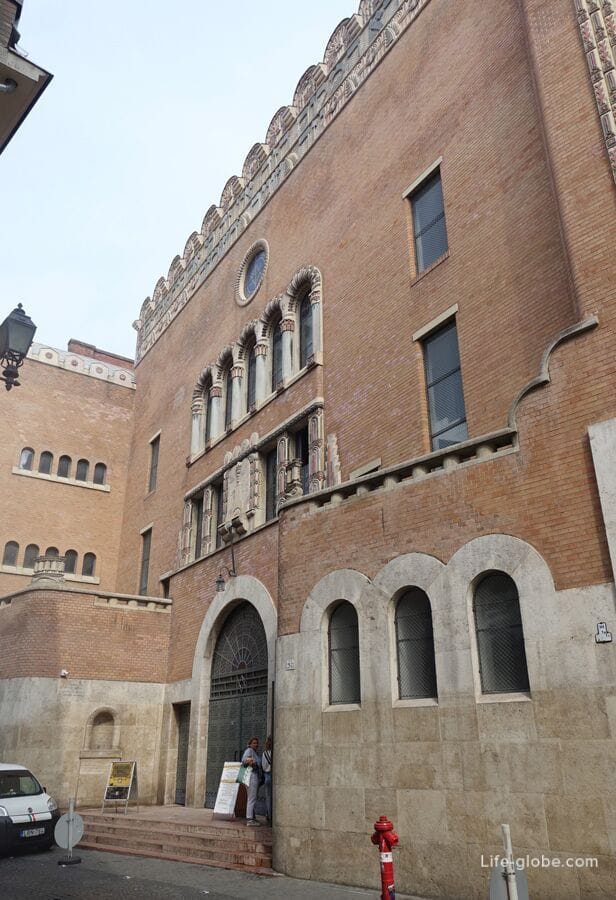

Museum of electrotechnics
Small MMKM Museum of electrotechnics (Elektrotechnikai Muzeum MMKM) is located next to the synagogue on the street Kazinczy, address: Kazinczy u. 21.
Admission to the Museum: 800 HUF adult, 400 - grace.
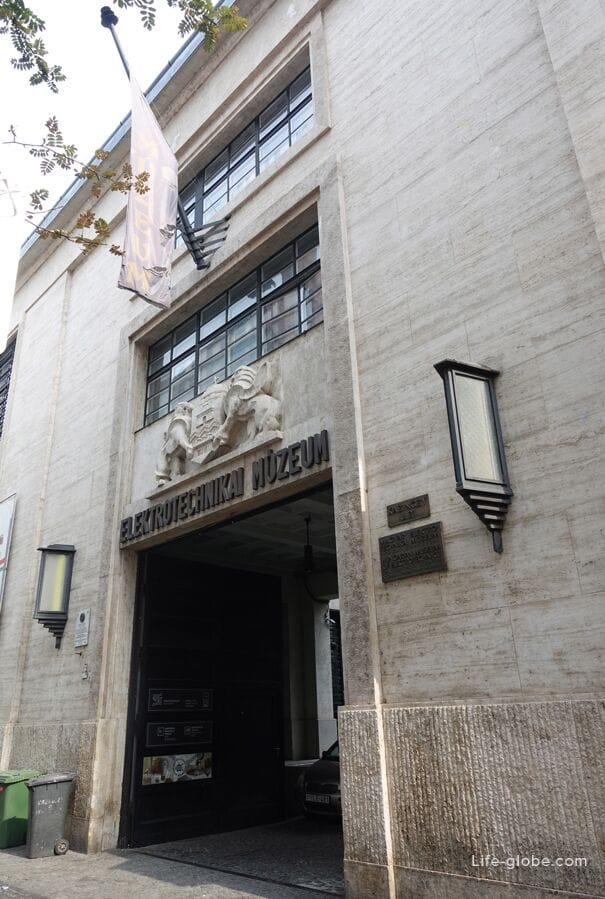
The ruins bars
Since the beginning of 2000-ies in the culture of Budapest is an important part of ruins bars (ruin pubs), iconic attractions of the city.
Ruins bars represent bars that are located in old and dilapidated buildings of the Central city ( mainly in the Jewish quarter), received a new interpretation, while retaining the original "naked" walls, window openings without glass and entrance openings without doors.
The interiors of the ruin bars eclectic, here there are: graffiti, vintage stuff, street art and music. Due to the popularity of these institutions among tourists and some locals in the evenings, the ruins bars reigns the fun and endless parties, and the air smells of alcohol and hookahs.
On the ruins bars culture "the ruins of Budapest" is not stopped today, in addition to the ruin bars, there are also other subjects of the ruins of the establishments of gardens-bars, located outdoors; street foods places, where there is an abundance of tents with snacks and meals; the ruins restaurants; ruins, cafes and disco-bars (the ruins of the clubs) where you can dance.
One of the most visited ruins and the true bar is Simple pub (Szimpla Kert). Read more about ruin bars of Budapest...
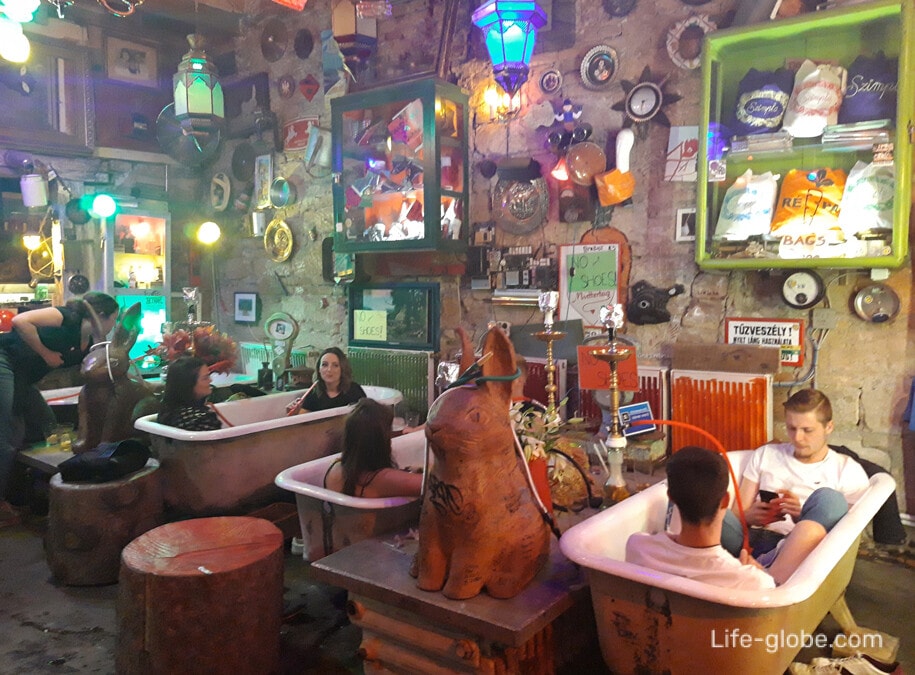

Hungarian bath
Hungarian or Hungarian bath tub (Hungaria fürdő) the building, which previously housed a Hungarian public bath, open may 23, 1827, and is known as a significant third Spa house of the town of pest.
The building was built in the art Nouveau style and is now a listed building. Today you can see only the facade was restored and the entrance hall in the art Nouveau style in 1910. A significant part of the building was destroyed.
Currently, the walls of the historic baths is a 4-star Continental hotel Budapestrooms decorated in the art Deco style and equipped with air conditioning. Link to the hotel
Building address: Dohany u. 42-44.
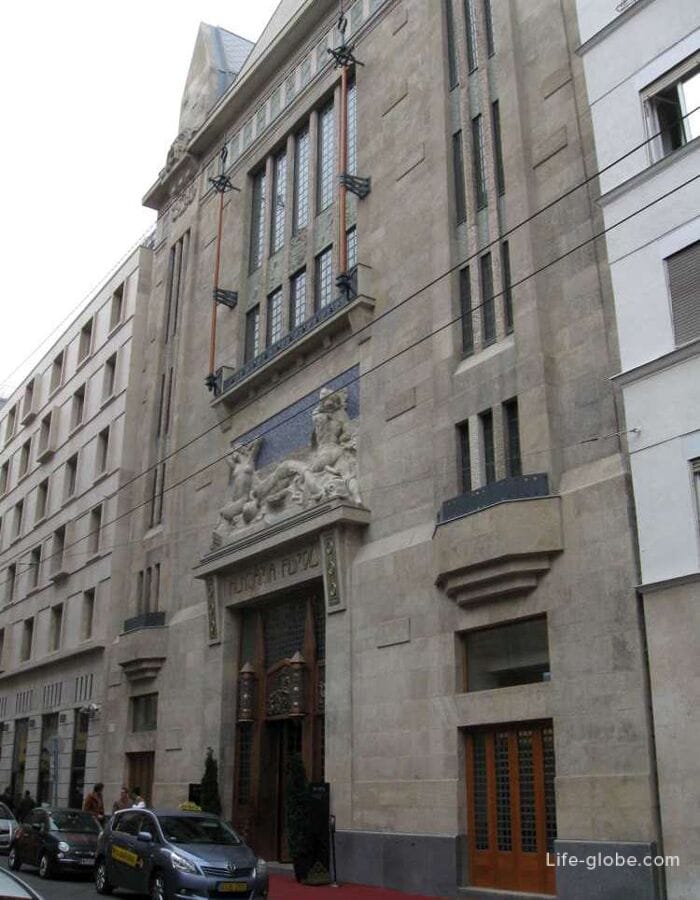
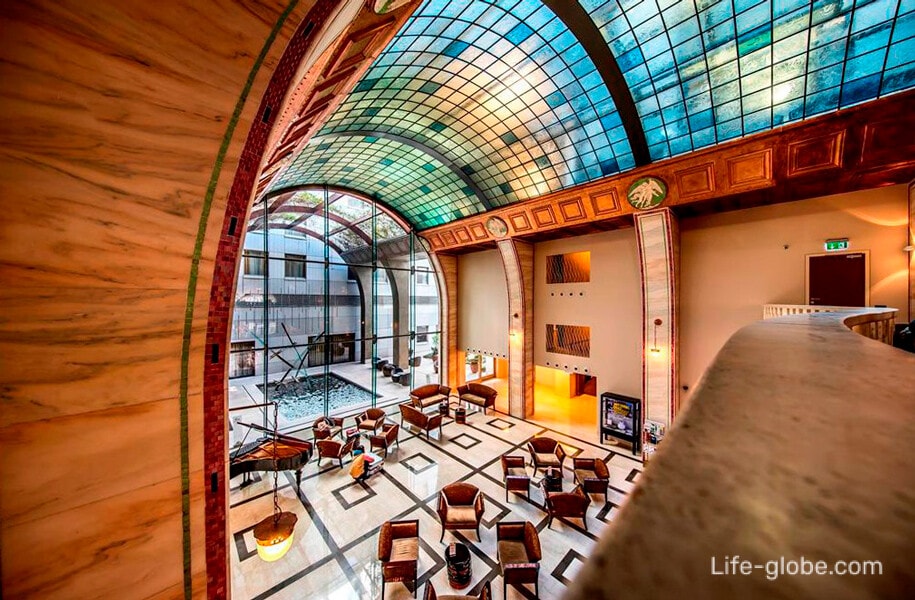
Photos of streets of the Jewish quarter in Budapest

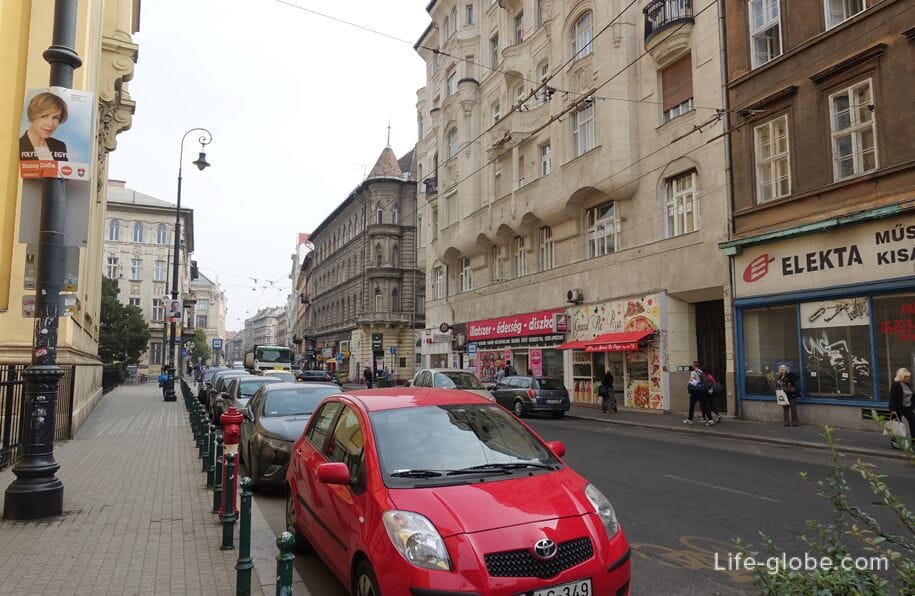
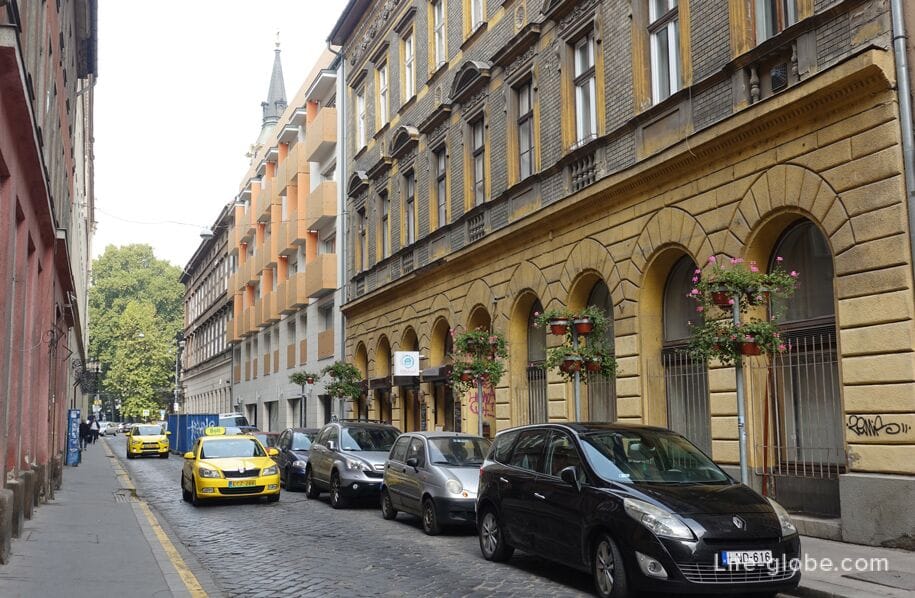
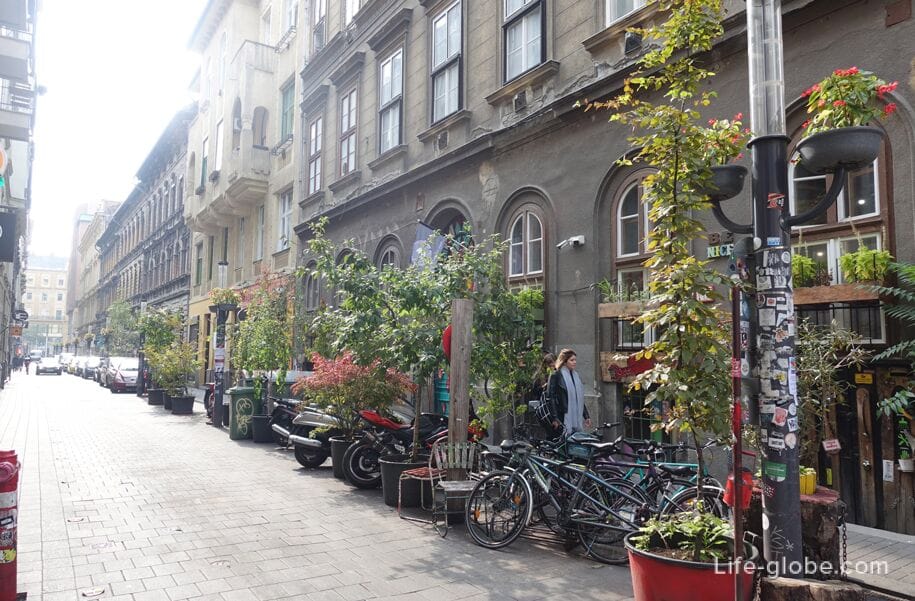
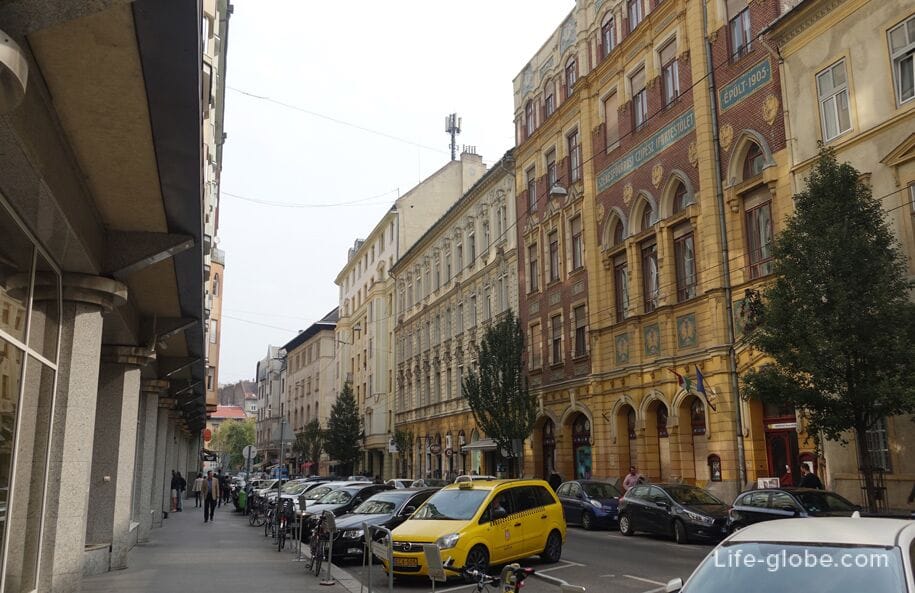


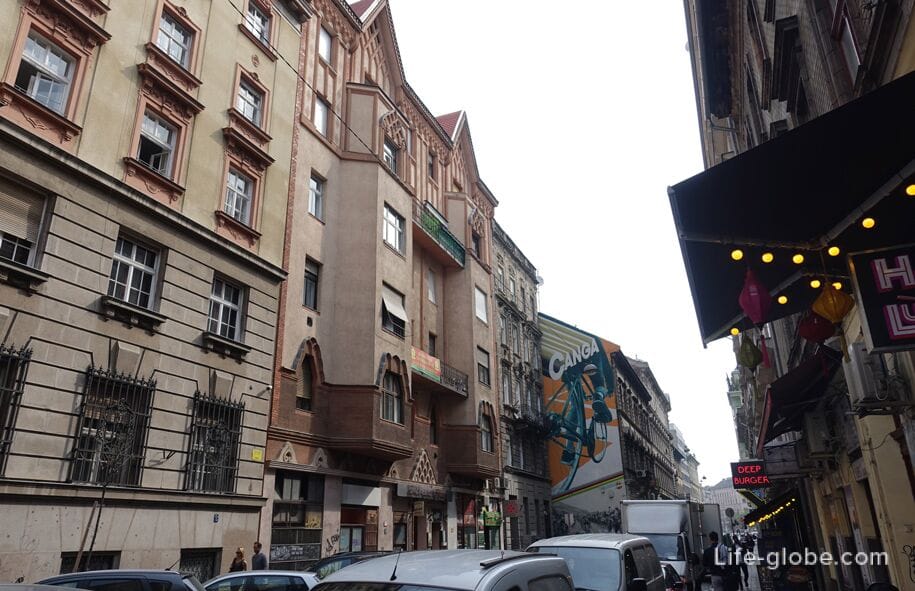
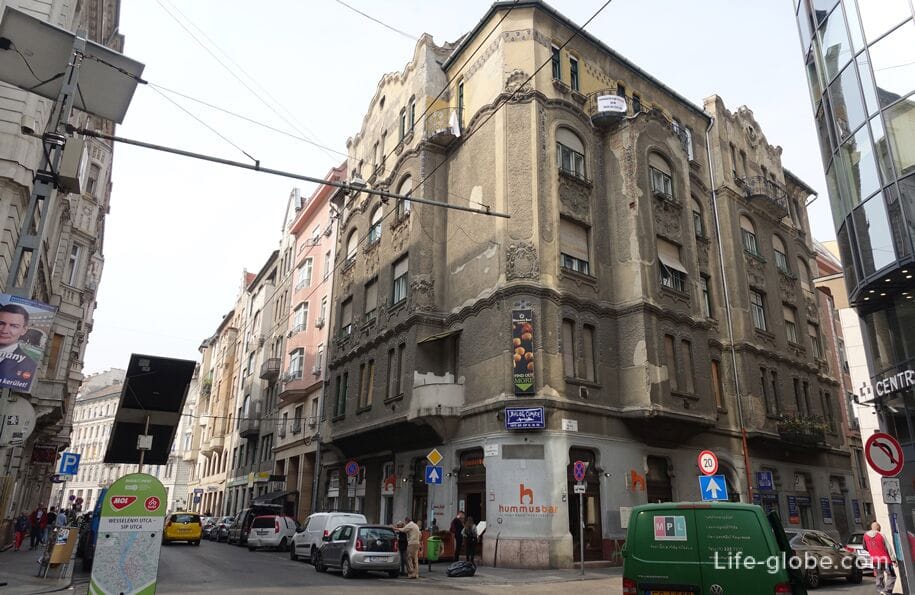
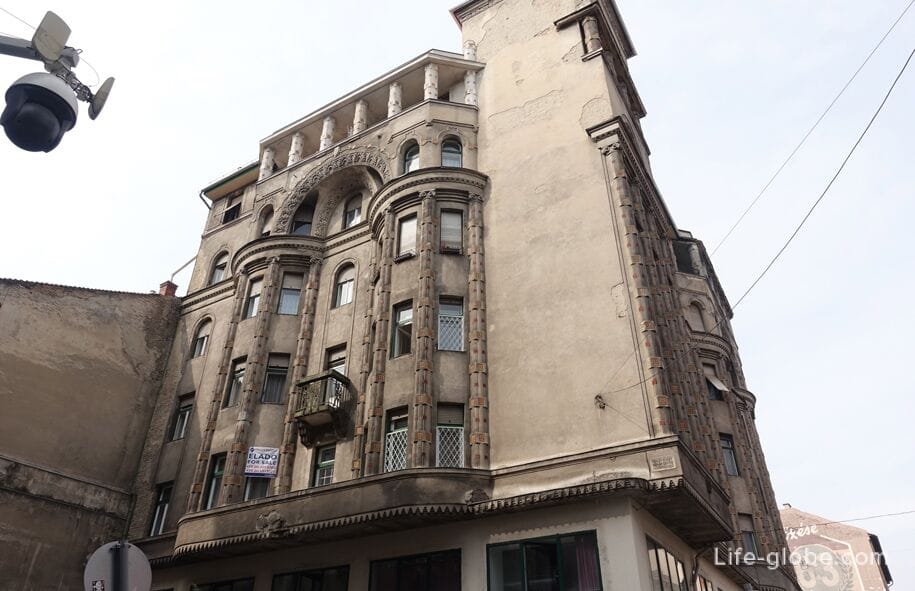
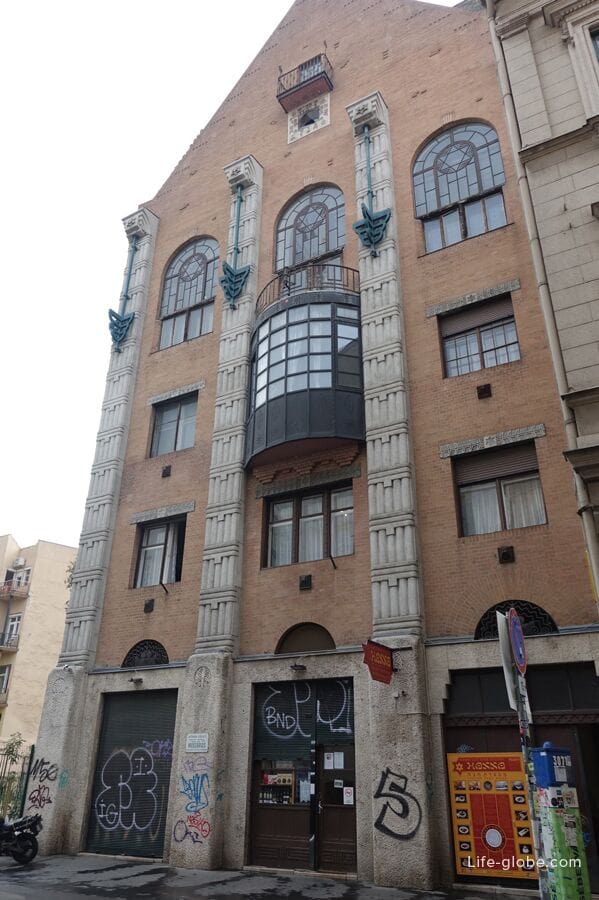
Attractions in the heart of Erzsébetváros district
In addition to the attractions located in the historic "Jewish quarter" in the heart of Erzsébetváros district also get you to other interesting places and objects.
Cafe and hotel the new York Palace
New York Palace hotel (New York Palace), also known as the new York Palace Budapest - the eclectic building was built between 1892 and 1894 for the Hungarian head office of the new York company of life insurance in which the historical Greek, Latin, Renaissance and Baroque styles are mixed in typically the creative structure of art Nouveau.
Its current highlight, the building was purchased after a complete restoration, opening the door 5 may 2006 as a luxury hotel and famous cafe on the ground floor.
Now on the first floor of the building is the legendary café new York (New York Cafe), and in the building is a luxurious 5-star hotel Dedica Anthology, Autograph Collection.
Address new York Palace hotel: Erzsebet krt. 9/11. Read more about new York Palace...
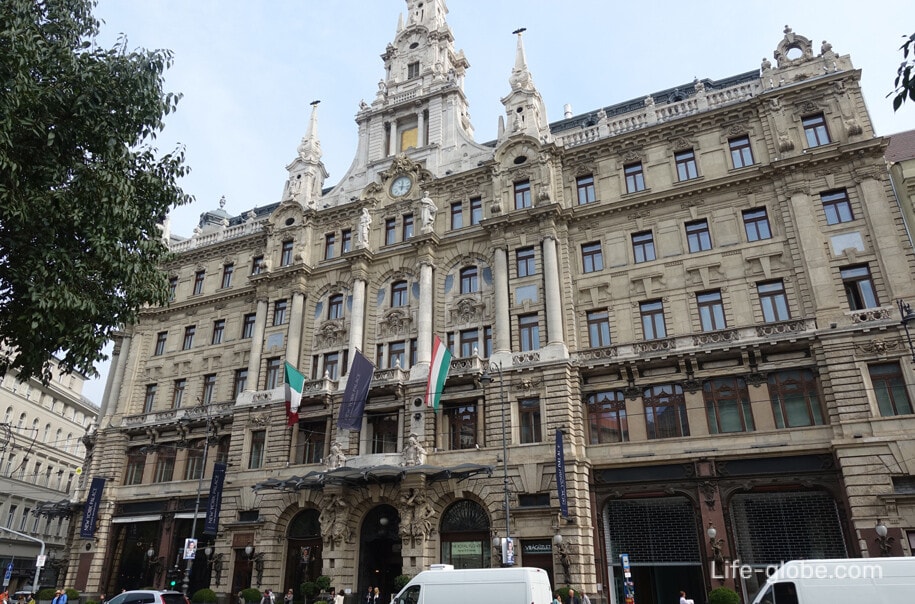
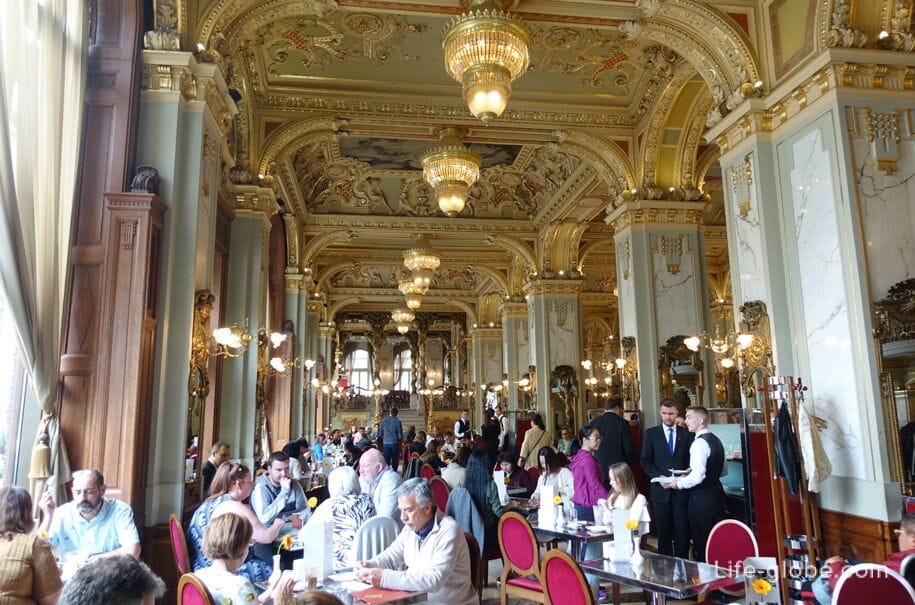
Theatre Madach
Madac the theatre (Madach Szinhaz) is located at: Erzsebet krt. 29-33.
The website of the theatre: madachszinhaz.
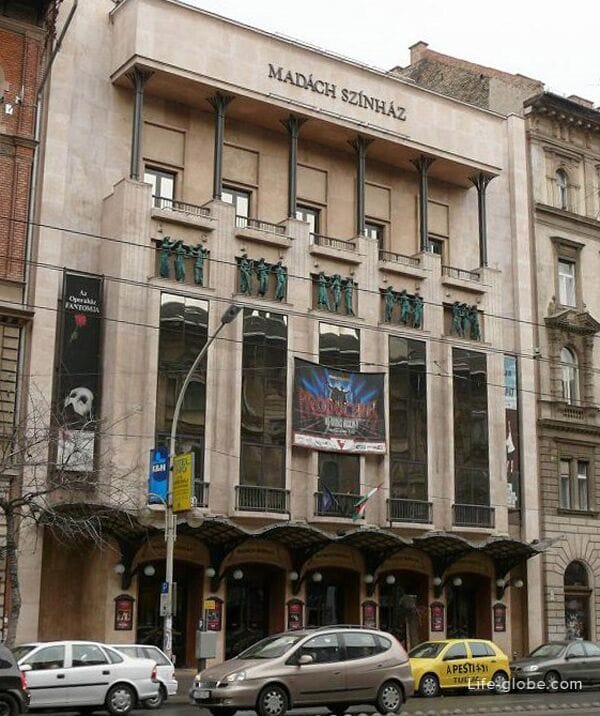
Hungarian theatre of pest
Hungarian theatre of pest (Pesti Magyar Szinhaz) exists since 1837.
Its modern design, the theater acquired in 1964-1966, after a major restructuring of the building.
The theater is located on the square Hevesi Sandor (Sandor Hevesi ter 4), and in front of the theatre is a small Park in which there are facial masks that epitomizes the immortalized forms of theater artists, without an image individuals.
The website of the theatre: pestimagyarszinhaz.
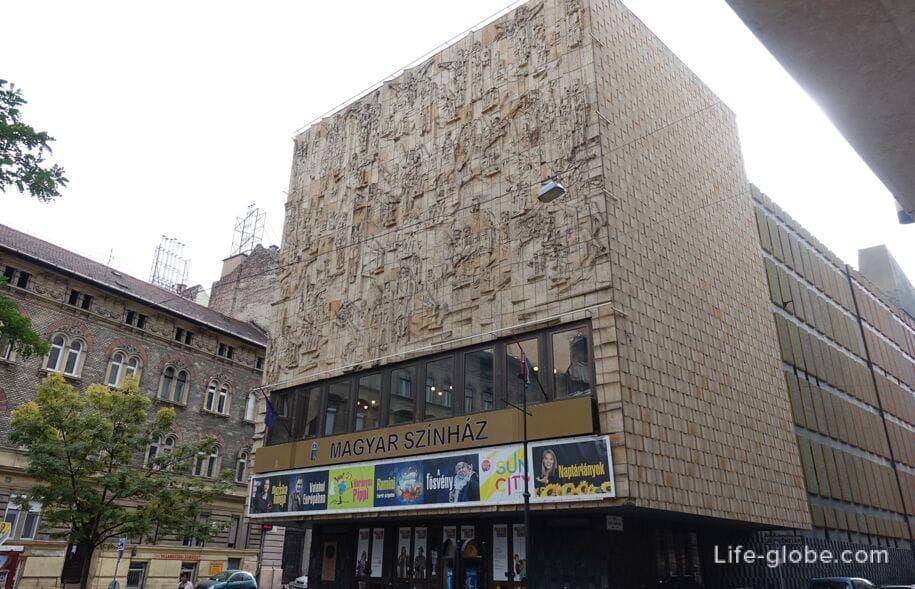
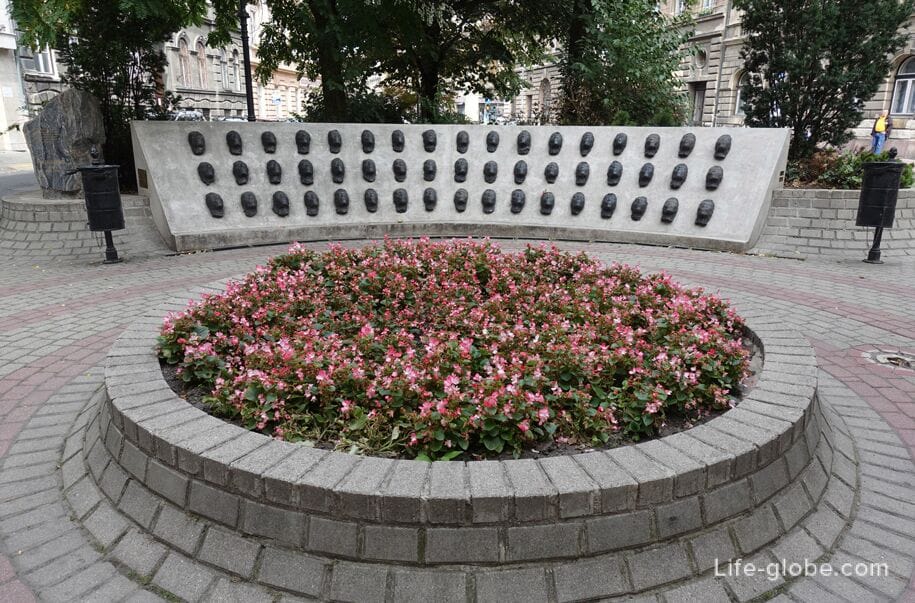
The Museum of brands
The Museum of brands (Belyegmuzeum) presents Hungarian and international brands, as well as items related to Hungarian brands.
The Museum's collection now in excess of 13.5 million marks, of which about 550,000 are put on display.
The permanent exhibition "the universe, the history of stamps" is stamps by continent, by country and in alphabetical order. The largest and most complete material is section of the Hungarian stamps.
The address of the Museum of brands: Harsfa u. 47.
The website of the Museum of brands: belyegmuzeum.
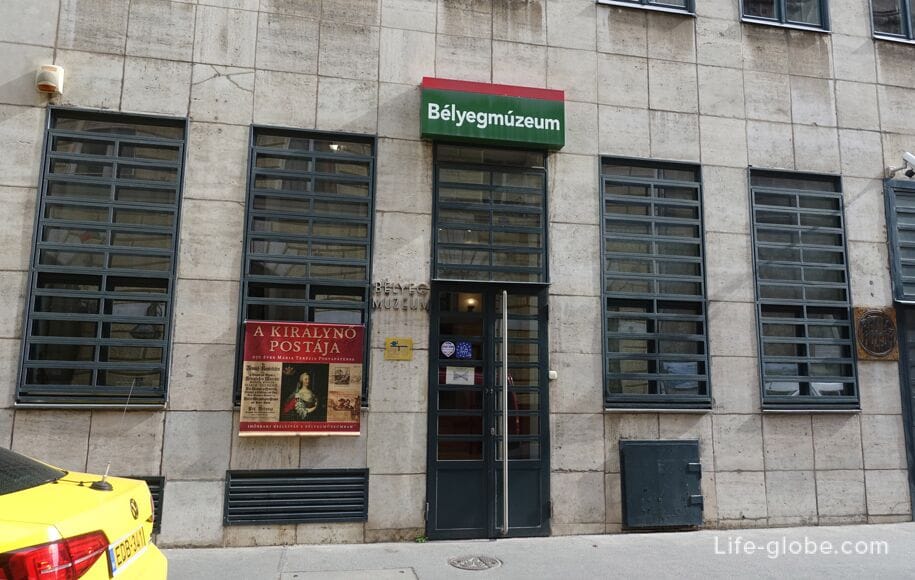
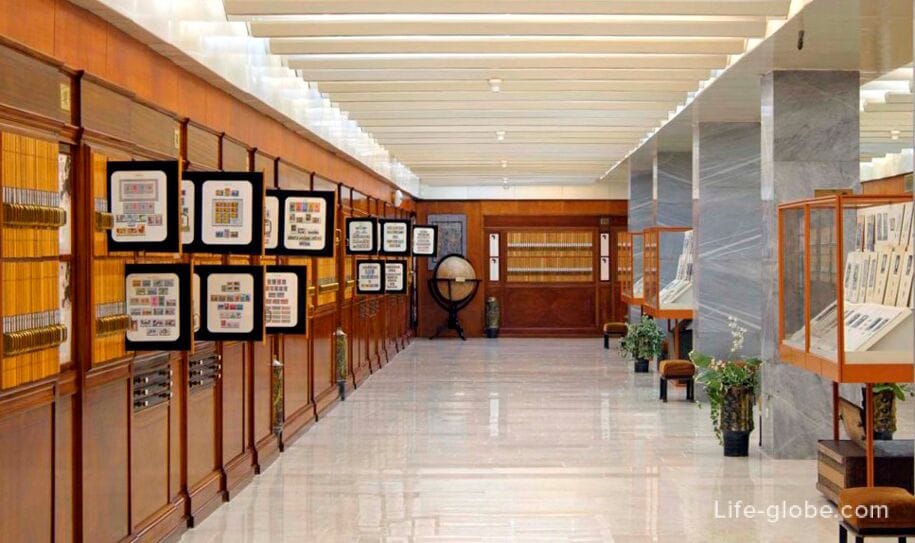
Church of St Elizabeth
The parish Church of St. Elisabeth of the Arpad dynasty (Arpad-Hazi Aslanov Szent Erzsebet-plebaniatemplom), also known as the parish Church of Erzsébetváros (Erzsebetvarosi plebaniatemplom) - the Roman Catholic Church, built between 1895 and 1901 years by Imre Schindler in neo-Gothic style, is the largest Church in the County and one of the most important attractions in the heart of Erzsébetváros district.
The Church is named after Saint Elizabeth of the house Arpad.
The facade of the Church stands two tall towers, with 76 meters in height and between which is located the main entrance to the Shrine. Above the entrance to the Church there is a Gothic window-rose, on which are placed statues of saints.
The interior of the Church is characterized by Puritanism. The high arch of the Church is supported by two rows of massive columns, the Central aisle which leads to the main altar.
The address of the Church: Rozsak tere 8.
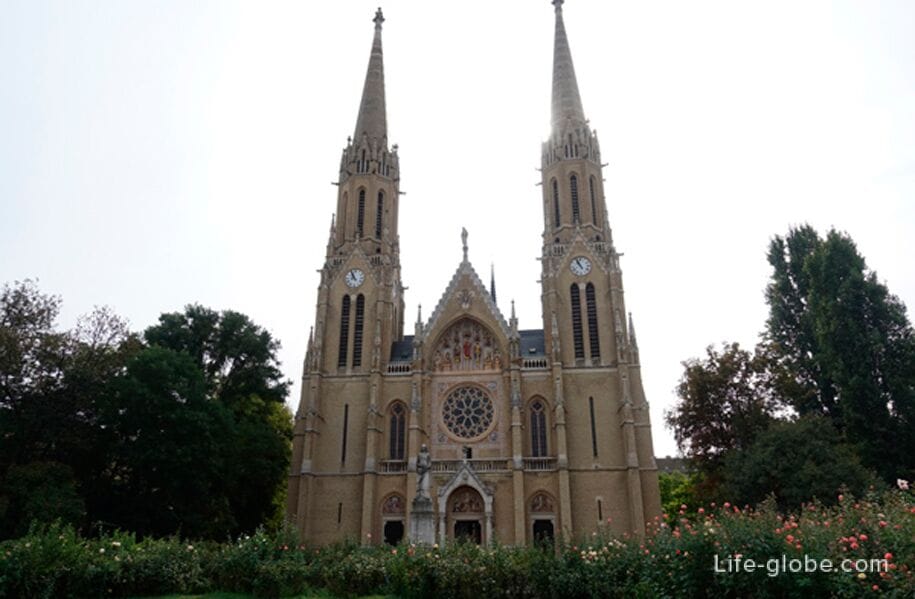
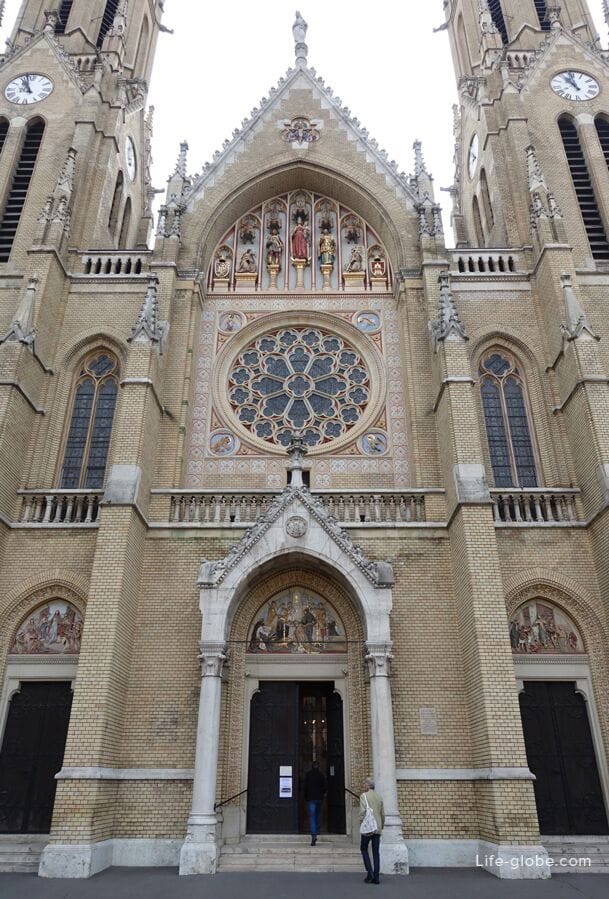
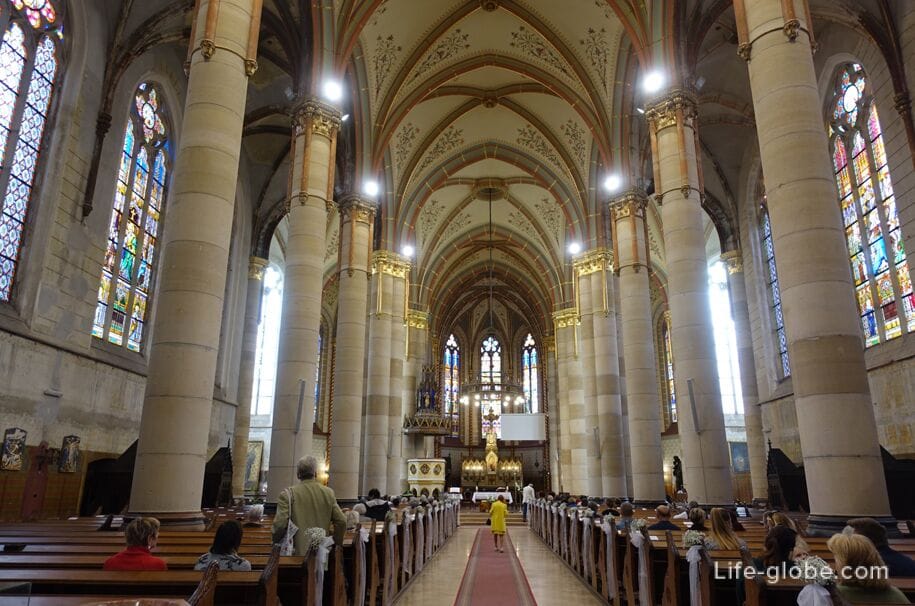
The Church Of The Intercession Of Christmas
Budapest Greek Catholic Church and the parish of the Intercession of Christmas (Budapesti Istenszülő oltalma görögkatolikus templom) was built in 1881 in the style of eclecticism.
Initially the Shrine was built as a Roman Catholic parish Church for the heart of Erzsébetváros district, but after the next was built the great Church of St. Elisabeth, the Church has lost its relevance and was transferred to the Greek Catholic Church (1905), thereby opening the first iconostasis of the Greek Catholic churches of the capital.
Small outbuildings on both sides of the Church was erected in 1929. Interior wall paintings were completed in 1932, and the stone altar, the substitute of wood, was completed in 1933.
The address of the Church: Rozsak tere 10.
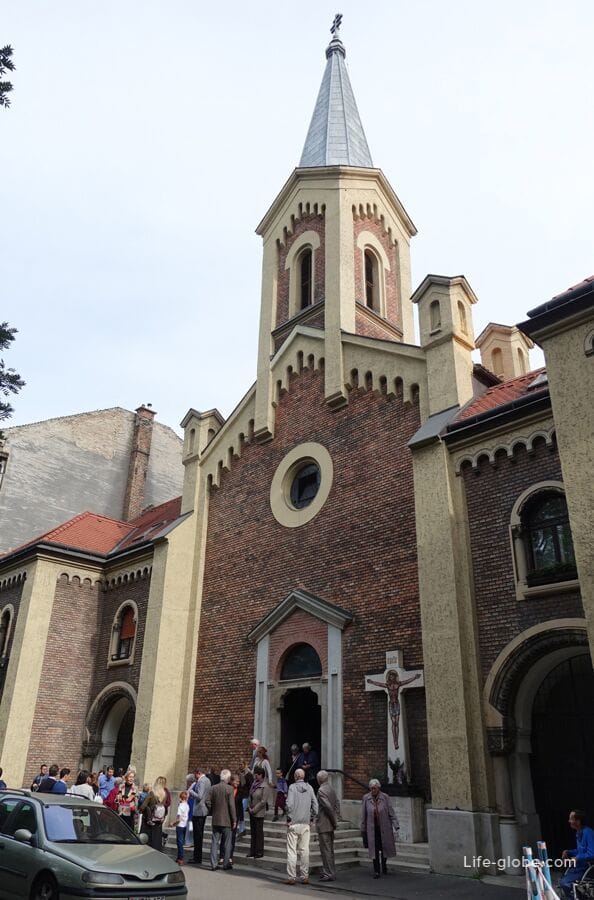
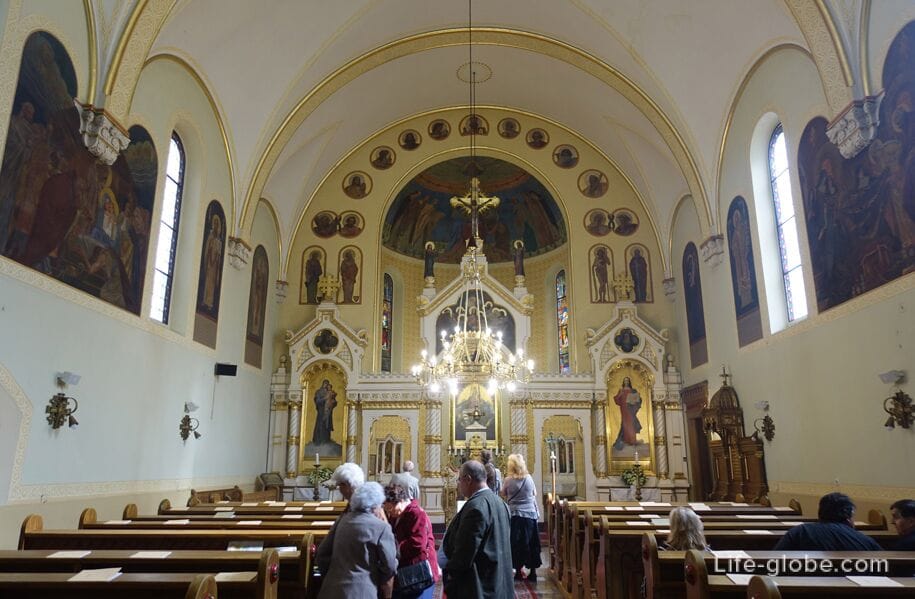
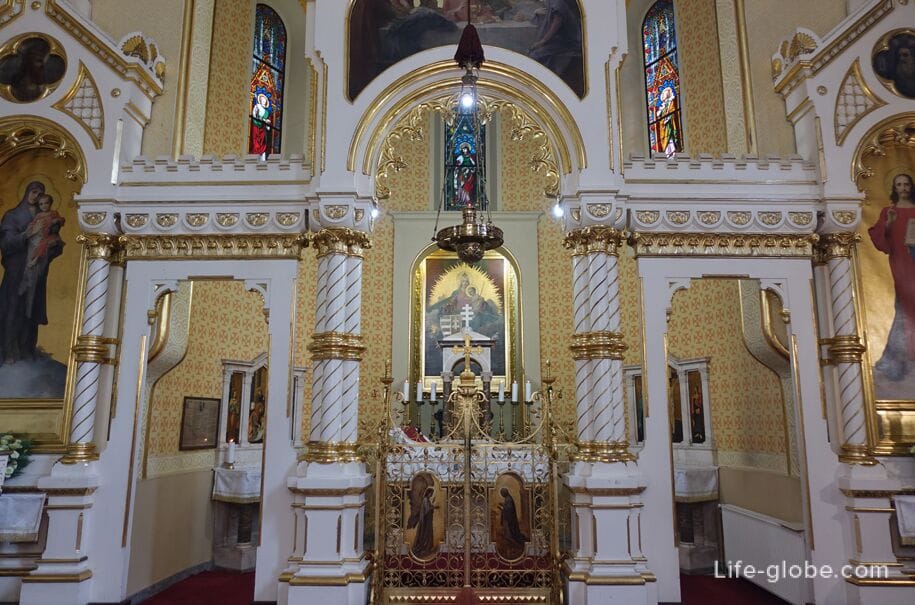
Reformed Church Fasori
Reformed Church parish Pasori (Budapesti Fasori reformatus templom) was built in 1911 - 1913 in the style of art Nouveau.
Near the building of the Church is a reformed elementary school.
The Church's address: Varosligeti fasor 5.
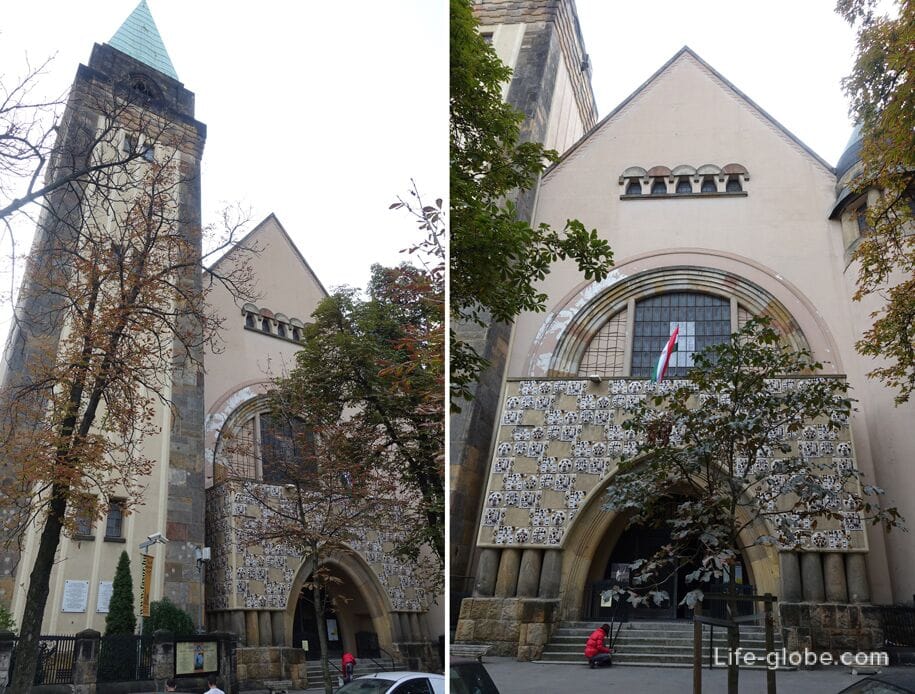
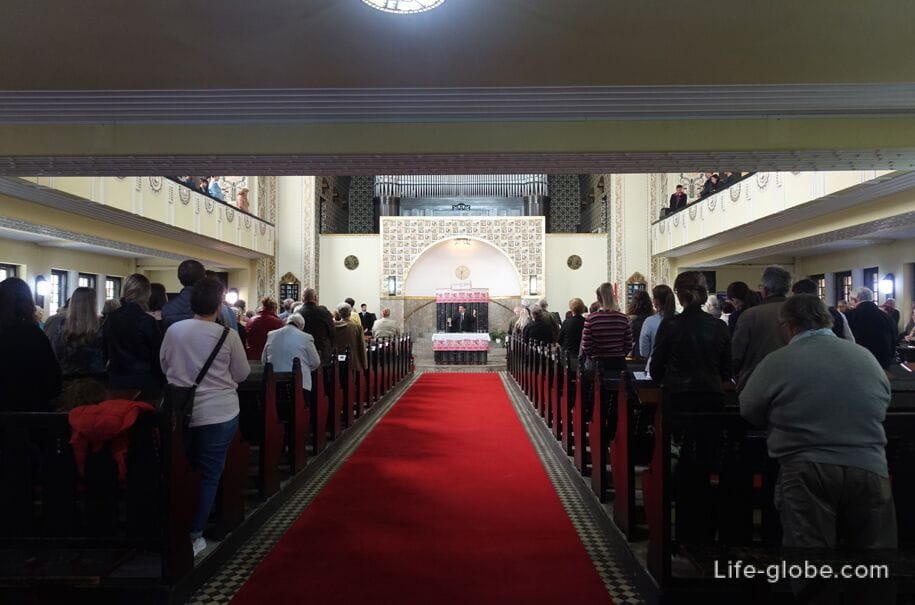
Lutheran Church Fasori
The Lutheran parish Church Fasori (Budapesti Fasori Evangélikus temploma Egyhazközseg) is the second largest Lutheran Church in Budapest.
It was the first Lutheran Church in Budapest, where services were held only in Hungarian.
The Church, whose construction was completed in 1905, was built in conjunction with the gymnasium, as a single project.
The Shrine is a neo-Gothic building, consisting of two parts. Its main tower has a height of 55 meters. Above the main entrance to the Church is a mosaic Mix Company: "Christ and the children" and the window-roses, with a diameter of five meters.
The Church's address: Varosligeti fasor 17.


City Park Avenue
Along the City Park avenues (Varosligeti fasor) that separates the heart of Erzsébetváros district with a neighboring district Teresa (of Terezvaros / Terezvaros), named in honor of Queen Maria Theresa in 1777, located architecturally noteworthy house-Villa, including:
Villa Gyorgy Rath (Rath György villa), built in 1880 in eclectic style.
In the walls of the Villa there is a branch of the Museum of applied art opened to the public in memory of györgy Rath (1828-1905) was the first Director of the Museum.
It includes a permanent exhibition entitled "Our modern" which collected the most important exhibits of the collection "Art Nouveau" Museum of art.
In front of the Villa has a small garden.
Address villas/Museum: Varosligeti fasor 12.
The website pitchfork/Museum: Ráth+György-villa;
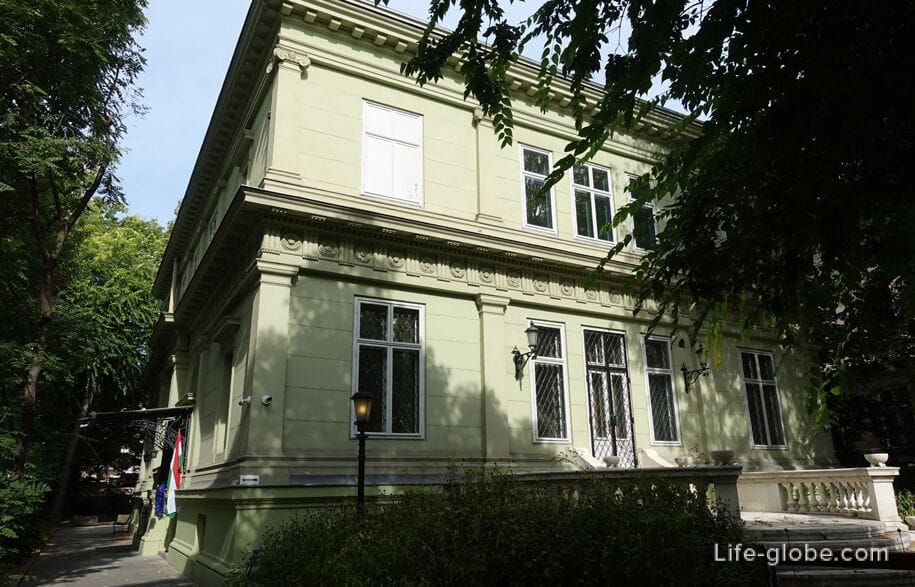
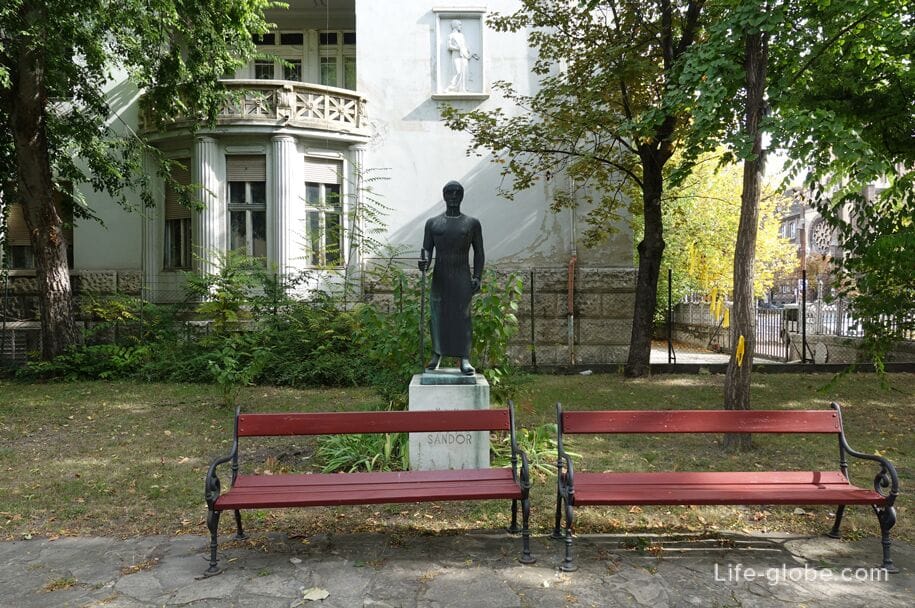
- Villa Korossy (Kőrössy villa), is located at the address: Varosligeti fasor 47-49;
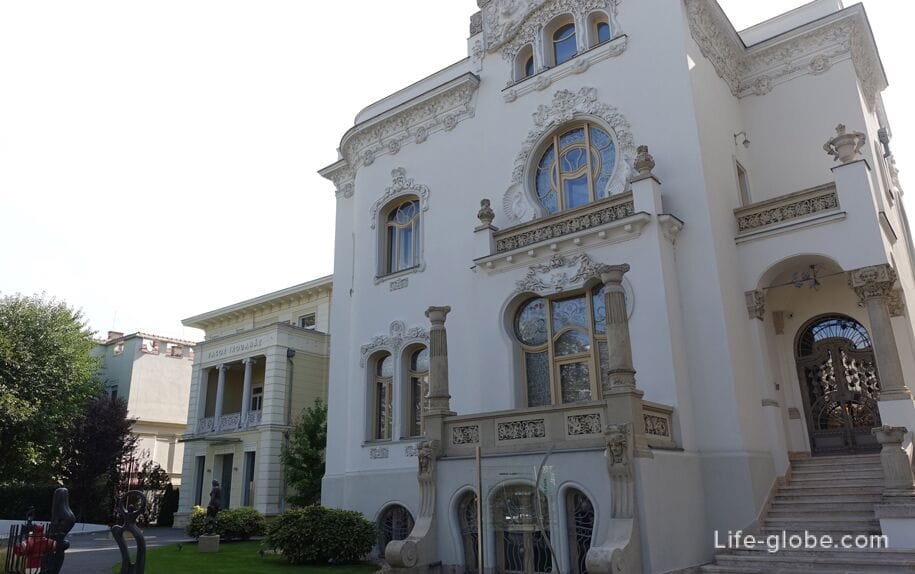
- also: Villa Adam (Adam Villa) in neo-Baroque style, which hosts conferences, weddings and other events; Villa Sekac (Szekacs-villa) and other historic buildings.
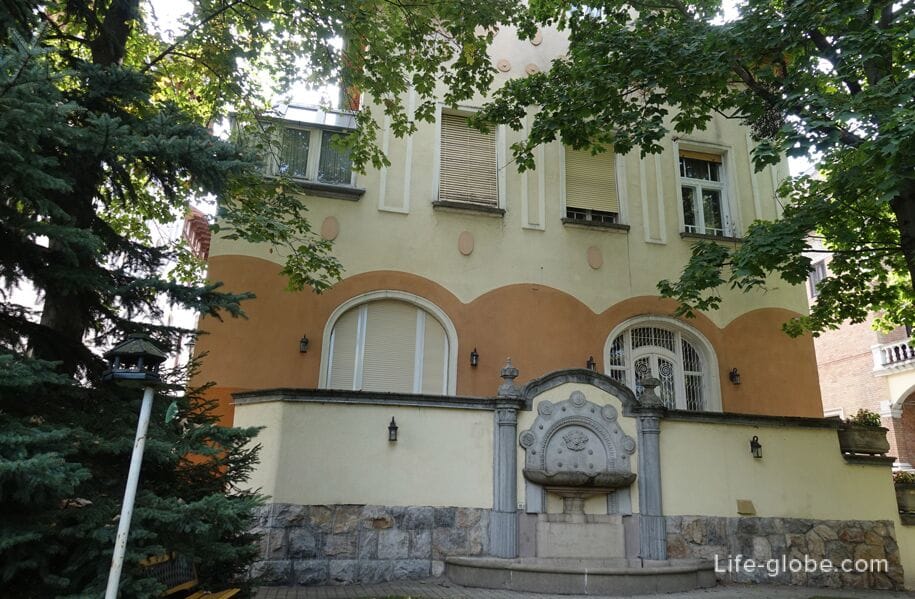
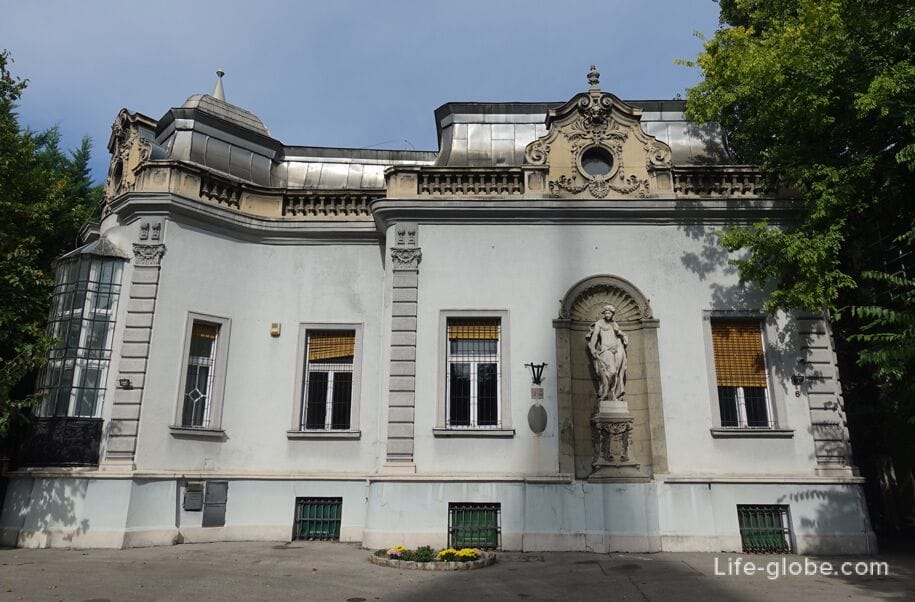
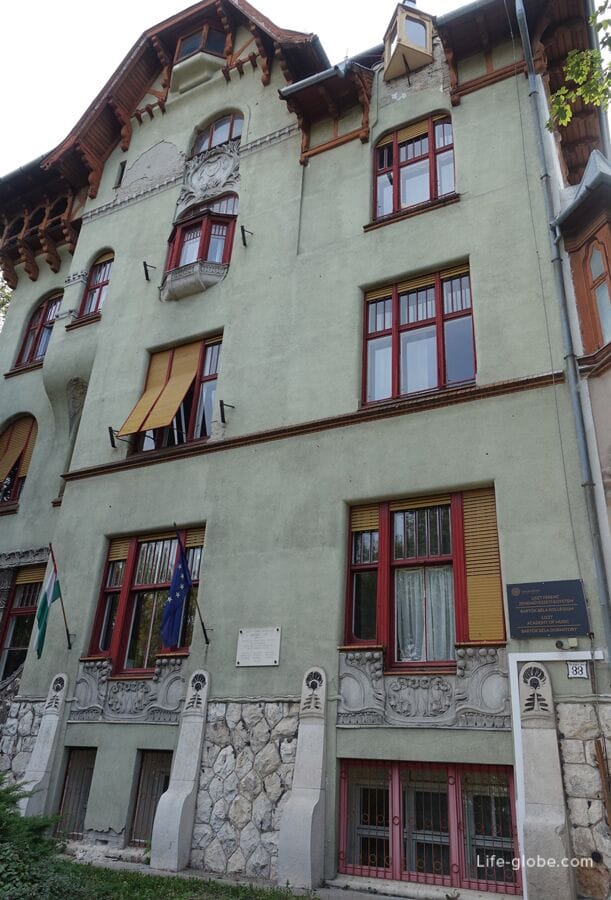
Jewish quarter and Erzsebetvaros district on the map
